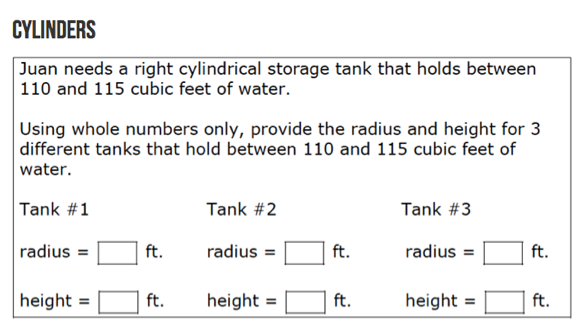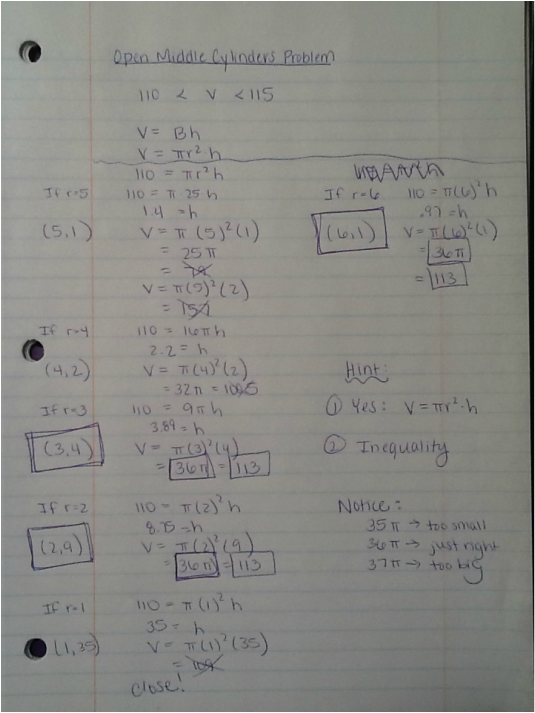My higher end students would probably realize that having a smaller radius is more likely to result in a solution. This is because the radius gets squared in the formula; therefore, increasing the radius will vastly increase the volume. A couple of them might also realize (even a little quicker than me) that 36*pi is a solution and will try to find values of r and h that will lead to 36*pi in the formula. Another idea might stem off of the second hint regarding the inequality concept. This would be to pick a radius to keep fixed (as I did), but to solve it twice - once with the volume set to 110 and once with the volume set to 115. If the range of heights included a whole number, they will have found a solution! (I simply used 110 and figured it would get me in the right ball park. If I felt I had a viable solution, I tested it to see if it really worked.)
In summary, I think that my students might approach this problem in several ways, including approaches that I have not even thought of. While several methods would be valid, some are more efficient than others. No matter how a student chooses to solve the problem, it would provide me with insight to their current understanding of the concepts as well as their problem-solving abilities. I will definitely use this next year when I teach my surface area and volume unit, and will encourage an “open middle” as each student navigates from start to finish.




 RSS Feed
RSS Feed